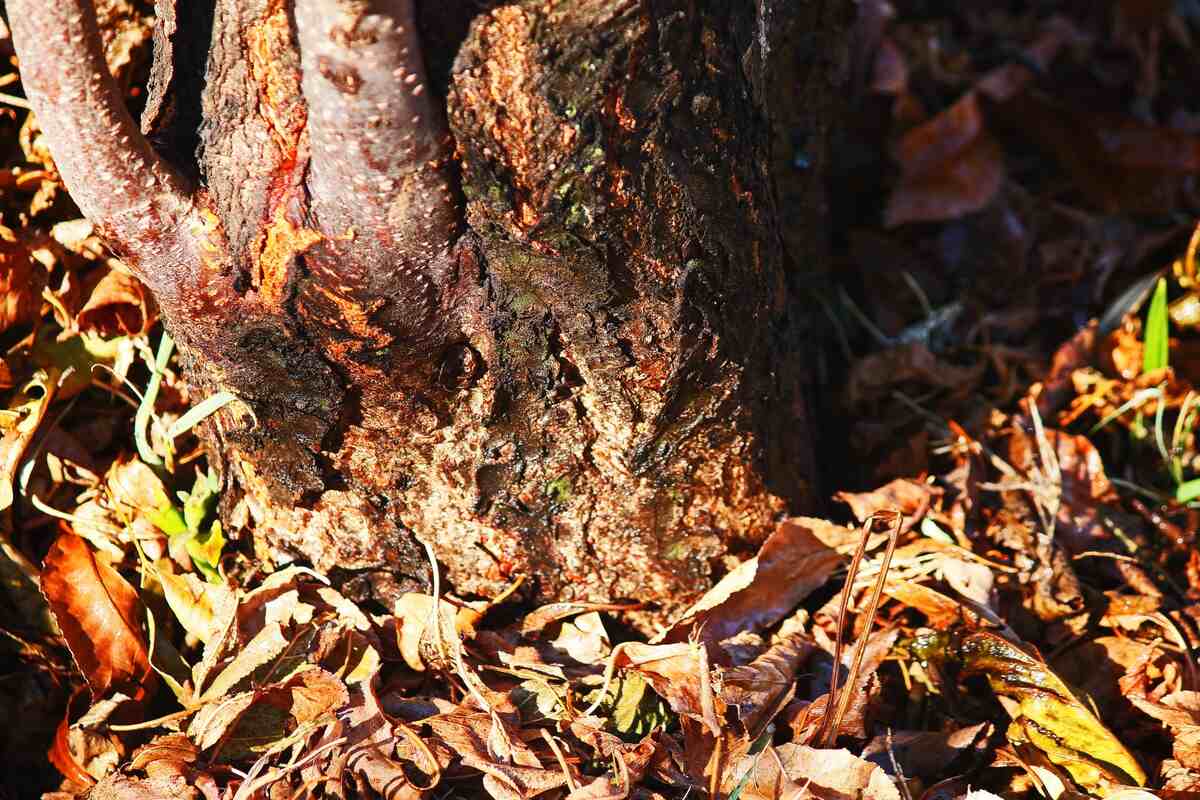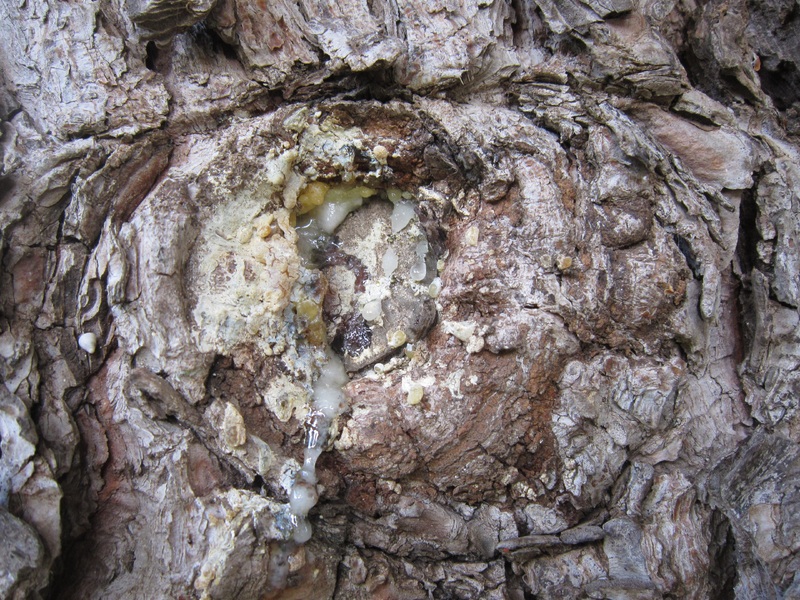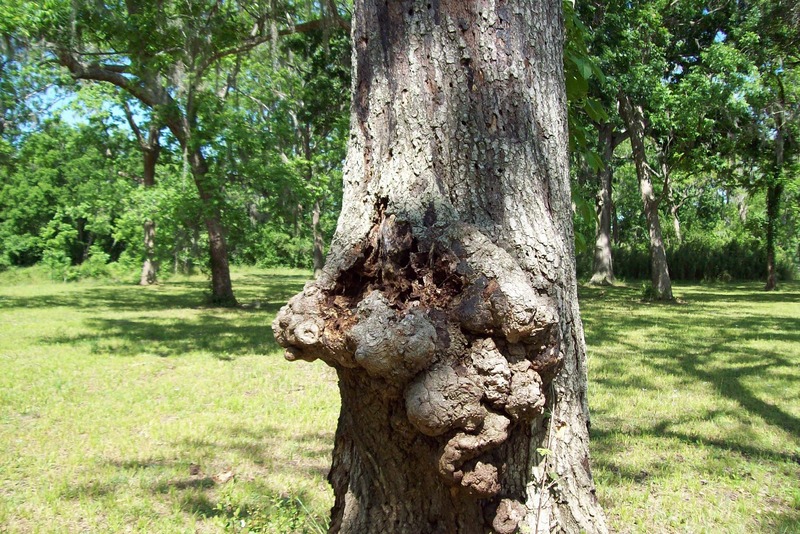
Trees spend their entire lives outdoors, so it’s no surprise that they are regularly wounded. Tree wounds are classed as anything that breaks the bark and damages the living tissues responsible for transporting nutrients. So, how can you treat tree wounds?
It is not always possible to prevent tree wounds in the first place. But thankfully, trees do a great job of containing and healing their own wounds. If the tree trunk is injured, there are some things you can do that can either help heal the injury or improve the wound’s appearance.
What is a Tree Wound?
A tree wound is any injury to the tree that breaks the bark. Similar to human skin, tree bark is intended to protect from bacteria and keep out pathogens.
Wounds that puncture the bark will damage the cambium layer, a thin layer of vascular tissue that is crucial to the movement of water and nutrients throughout the tree. If less than 25% of the bark around the trunk has been damaged, the tree will most likely recover. The more bark stripped around the tree, the more it is at risk of death. You can always contact a local certified arborist to learn more about when you need to provide wound treatment to your tree.
How to Identify a Tree Wound
You can easily tell if your tree has been injured by noticing damage of any kind that penetrates the protective layer of bark, such as scrapes or burns from lawn equipment or holes from boring insects. Interestingly enough, tree bark and human skin have a similar healing process, so the way a tree contains its wounds is also a way you can identify if it’s been wounded – similar to seeing a scab or callus on your skin.
For trees, these containment methods are called Barrier Zones and Compartmentalization.
Barrier Zones
Trees naturally try to avoid further injury by setting chemical and physical barriers to close the damaged tissue and confine the damage from spreading further. If the tree is fast and effective at creating a barrier zone, the infection remains localized and does not spread. Actively growing trees are fairly successful in coping with the spread of decay.
Compartmentalization
Trees have a unique defense against fungi and decay when they are wounded. Trees do not heal, but instead, they gradually seal the opening by forming “callus” tissue around the edges of the wound. This new wood forms a protective boundary to prevent the spread of infection and produces special compounds in the wood cells that set up a wall to isolate the infected area.
This protection process is called compartmentalization. Once compartmentalized, discoloration and decay do not spread any further unless the barriers are broken in some way.
How to Treat a Tree Wound

Scribing Wounds
Tree wounds often appear ragged where the bark is torn during the injury. Cutting or “scribing” dead and injured bark away from a wound with a sharp knife starts the compartmentalization process. It encourages the healing process and will lessen rot by encouraging the bark to form a callus. Take care not to remove any healthy bark and expose more live tissue than necessary.
Pruning Wounds
Proper pruning cuts should maximize the tree’s ability to close wounds and fend off infection. The best time to prune is during the tree’s dormant season in winter when trees are not actively growing, and infection rates are lower.
Pruning does place some stress on the tree by providing possible entry points for disease and creating wounds that require energy to close. You should prune dead, dying, and broken branches as well as branches that are low, crossing, or hazardous. Cutting limbs flush with the trunk will leave a larger area to callus over and a greater chance of the wound decaying. Make clean, smooth cuts, and do not leave stubs.
Cavity Filling and Wound Dressings
Trees have developed effective healing methods, so in most cases, it is best to let wounds heal on their own. There is little evidence that filling a tree cavity does anything to improve tree health. Filling large holes in the tree is generally done for cosmetic reasons only since the fillings may stop the callus tissue from folding into the wound.
Using filling or wound paints is not recommended since it does not stop decay and can have more detrimental effects on the tree than if it were left alone to heal. Wound dressings can cause the following issues:
- Prevents drying and encourages fungal growth like oak wilt
- Interferes with the formation of wound wood or callus tissue
- Inhibits compartmentalization
- Can be a food source for pathogens
What Causes Tree Wounds?

The most common cause of tree wounds is operating machinery too close to the tree trunk. Many trees are injured by gardeners using lawnmowers, weed-whackers, and other equipment. But nature also can cause tree wounds. Storms, fire, and wildlife can all impact tree health.
Here is a comprehensive list of many possible culprits:
- Animals and other wildlife
- Insects
- Fire
- Ice
- Storms
- Lightning strikes
- Lawnmowers, edgers, pruning shears and other equipment
- Automobiles
- Construction equipment
- Herbicides with sub-lethal rates of glyphosate
How to Prevent Tree Wounds
Above all, the most important step you can take to prevent tree wounds is to keep your trees healthy. Although pruning creates tree wounds, pruning off broken or diseased branches limits damage so long as you never top a tree or leave pruning stubs that can rot.
Keep mowers away from trees, use Integrated Pest Management methods, fertilize, water, and keep a layer of mulch around the root area.
FAQ About Treating Tree Wounds
Pruning sealers are products that claim to “aid the healing of pruning cuts” or “minimize sap loss.” These pruning paints are petroleum-based, and some contain asphalt. There are also alternative natural tree sealers made from collagen and aloe gel.
The outward healing process may take upwards of 15 to 20 years. However, the compartmentalization process is fast-paced and extremely effective within the tree, taking up to 3 years.
If you have accidentally scraped a significant amount of bark or made a deep cut without removing a branch, then a cloth bandage can sometimes solve the problem. You can wrap the affected area in burlap or some other breathable fabric and fasten it tightly with twine. This method is only effective if the tree bark near the affected area is still moist.
When to Call a Tree Care Pro
If you’re not confident in your ability to offer proper tree care for your wounded tree and broken branches, then you might be happier hiring a reliable landscaping pro instead.
If you need someone experienced to handle all of your tree, shrub, and lawn maintenance needs, check out Lawnstarter’s extensive list of landscaping contractors in your area.
Main Image Credit: PublicDomainPictures